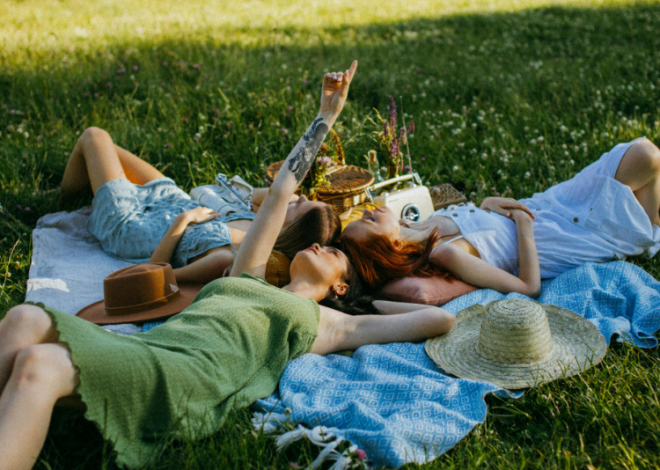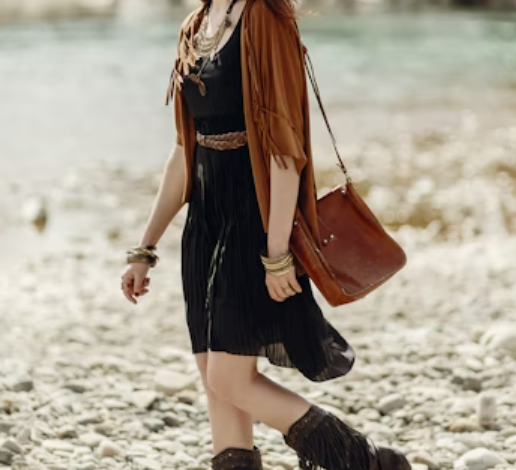
Mastering the Art of Color Blocking: Bold and Vibrant Fashion Statements
Introduction
When it comes to making a fashion statement, nothing catches the eye quite like color blocking. This daring technique allows individuals to create bold and vibrant outfits that exude confidence and style. Mastering the art of color blocking is about understanding the principles of color theory, selecting the right color combinations, and knowing how to apply them in different fashion categories. In this article, we will delve into the world of color blocking, exploring its history, techniques, and tips for creating stunning fashion statements.
What is Color Blocking?
Color blocking is a fashion technique that involves combining solid blocks of different colors to create visually striking outfits. It is a departure from traditional patterns or prints and relies solely on the use of vibrant hues to make a statement. By strategically pairing contrasting or complementary colors, color blocking allows individuals to create unique and eye-catching ensembles.
History of Color Blocking
The concept of color blocking can be traced back to the early 20th century when avant-garde artists sought to break away from traditional fashion norms. Artists like Piet Mondrian and Sonia Delaunay experimented with geometric shapes and bold colors, laying the foundation for the color blocking movement. Since then, color blocking has continued to evolve and has become a popular trend in the fashion industry.
Understanding Color Theory
To master color blocking, it is crucial to have a basic understanding of color theory. Colors can be categorized into primary, secondary, and tertiary colors, and each color has its own unique characteristics. Color theory also explores concepts such as hue, saturation, and value, which are essential in creating harmonious color combinations.
Choosing the Right Colors
The key to successful color blocking lies in selecting the right colors that complement each other. While some color combinations create a striking contrast, others create a harmonious blend. By considering factors such as skin tone, personal style, and the occasion, individuals can choose colors that best express their personality and create a powerful fashion statement.
Color Blocking Techniques
There are several color blocking techniques that can be employed to create different effects and styles. Here are some popular techniques:
Monochromatic Color Blocking: This technique involves using different shades and tones of a single color to create a cohesive and sophisticated look.
Analogous Color Blocking: Analogous colors are located next to each other on the color wheel. This technique involves combining colors that share a similar undertone, creating a harmonious and pleasing effect.
Complementary Color Blocking: Complementary colors are located opposite each other on the color wheel. This technique involves pairing contrasting colors to create a bold and vibrant visual impact.
Triadic Color Blocking: Triadic color schemes involve using three colors that are evenly spaced on the color wheel. This technique creates a balanced and energetic look.
Tips for Creating Bold and Vibrant Fashion Statements
To create captivating color-blocked outfits, consider the following tips:
Balance is key: Maintain a balance between the colors used to ensure a visually appealing result.
Play with proportions: Experiment with different sizes and placements of color blocks to create interesting visual effects

Mix textures: Combine different textures within the color-blocked outfit to add depth and interest.
Accessorize strategically: Use accessories in neutral tones or complementary colors to enhance the color blocking and tie the look together.
Consider color psychology: Understand the emotional impact of different colors and use them to convey the desired mood or message through your outfit.
Start with a focal point: Begin with a statement piece or a color that you want to highlight, and build the rest of the outfit around it.
Experiment with patterns: Incorporate patterns into your color blocking for added visual interest and dimension.
Consider the season: Adapt your color blocking choices to the season or occasion. Bright and vibrant colors work well for spring and summer, while deeper tones are more suited for fall and winter.
Take inspiration from nature: Look to the colors found in nature for inspiration and create color combinations that evoke a sense of harmony and beauty.
Be confident: Color blocking is all about self-expression and making a bold statement. Own your outfit with confidence and embrace the vibrant energy it brings.
Color Blocking in Different Fashion Categories
Color blocking can be applied to various fashion categories, including:
Clothing: Experiment with color blocking in dresses, tops, pants, and skirts to create dynamic and eye-catching outfits.
Footwear: Colorful shoes can add a pop of color to any outfit. Try color blocking with shoes in contrasting hues or opt for shoes that feature color blocking patterns.
Bags and accessories: Color blocking can be incorporated into handbags, scarves, belts, and jewelry to elevate your overall look.
Makeup: Extend color blocking to your makeup routine by using contrasting shades on your eyes, lips, and nails for a bold and cohesive look.
Famous Color Blocking Designs
Over the years, several designers have made a name for themselves through their innovative color blocking designs. From Yves Saint Laurent’s iconic Mondrian dress to the vibrant creations of Diane von Furstenberg, color blocking has been a recurring theme in the fashion world.
Fashion Icons and Color Blocking
Numerous fashion icons have embraced color blocking as part of their signature style. Celebrities like Blake Lively, Lupita Nyong’o, and Olivia Palermo have been seen rocking bold color-blocked outfits on red carpets and in street style looks, inspiring fashion enthusiasts around the world.
Conclusion
Mastering the art of color blocking allows individuals to create bold and vibrant fashion statements that capture attention and express personal style. By understanding color theory, selecting the right colors, and applying various color blocking techniques, anyone can create visually striking outfits. Remember to experiment, have fun, and embrace the power of color to make a confident fashion statement.
FAQs
Can color blocking work for all body types? Color blocking can work for all body types. The key is to choose color combinations and placements that flatter your figure and draw attention to your desired areas.
How can I incorporate color blocking into my professional wardrobe? For a professional setting, opt for color blocking in more subtle and sophisticated tones. Stick to classic silhouettes and balance the bold colors with neutral pieces.
Are there any color combinations that should be avoided in color blocking? While there are no strict rules, some color combinations may clash or create an overwhelming effect. It’s best to avoid combinations that are too jarring or clash with your skin tone.
Can color blocking be worn in casual settings? Absolutely! Color blocking can add a playful and vibrant touch to casual outfits. Mix and match colors to create a fun and laid-back look.
Can I mix patterns with color blocking?
Yes, you can mix patterns with color blocking to create even more visually intriguing outfits. However, it’s important to maintain a balance and ensure that the patterns and colors complement each other rather than clash. Consider using patterns with similar color schemes or opt for patterns that incorporate the colors you are using in your color blocking.
Remember, fashion is about expressing your personal style, so don’t be afraid to experiment and find combinations that resonate with you. With practice and a good understanding of color theory, you can confidently incorporate both patterns and color blocking into your outfits for a truly unique and eye-catching look


